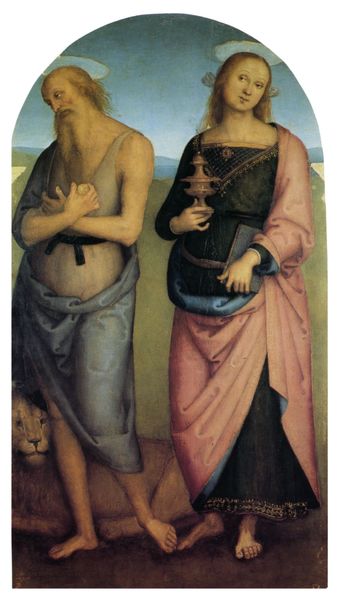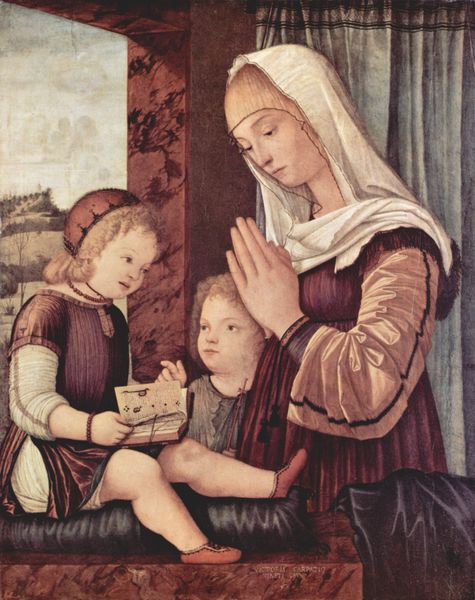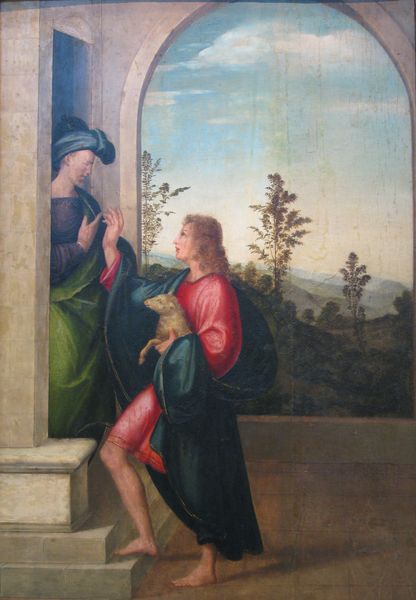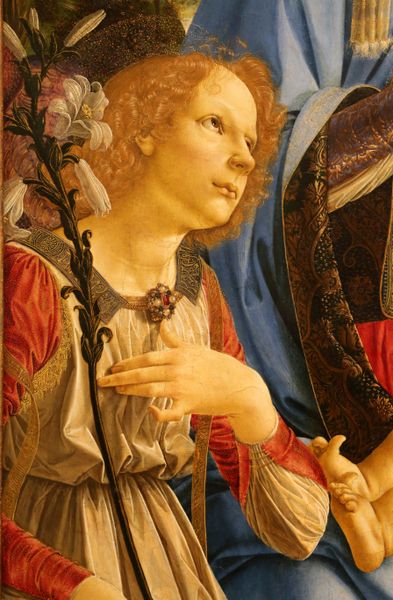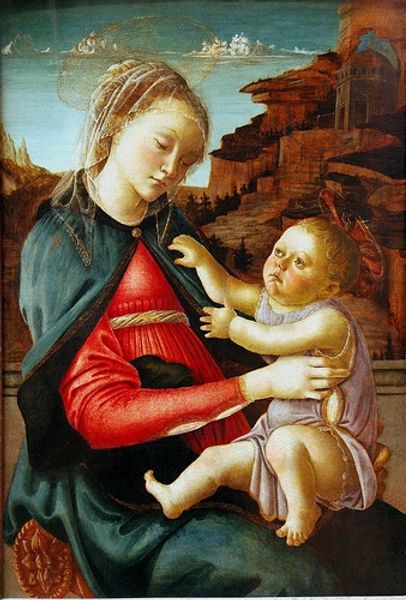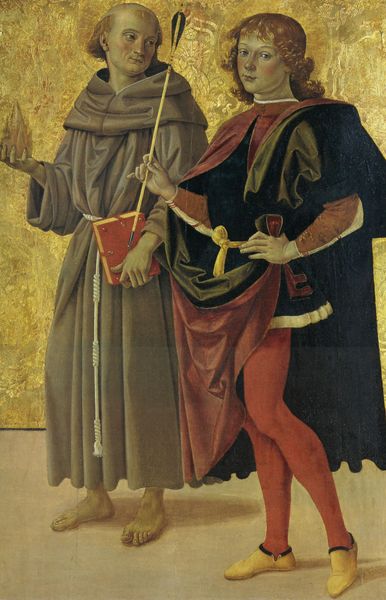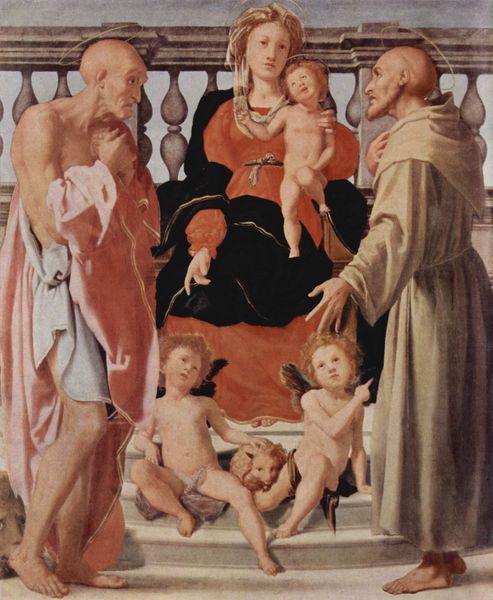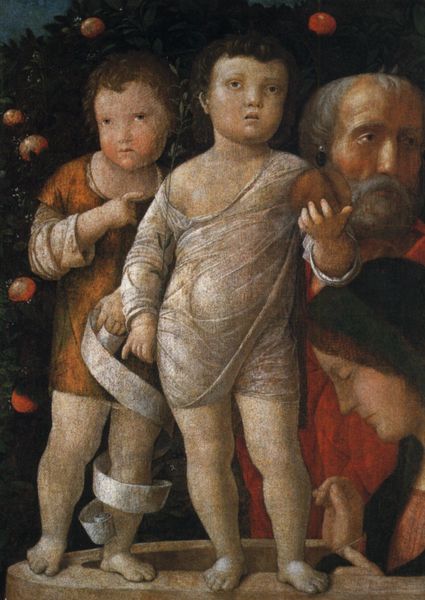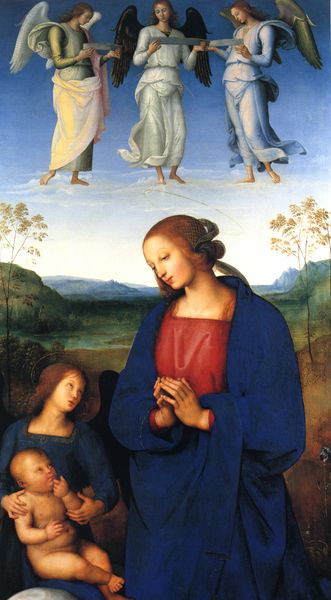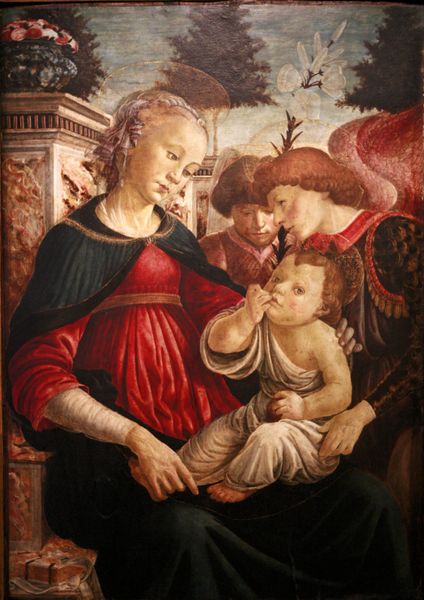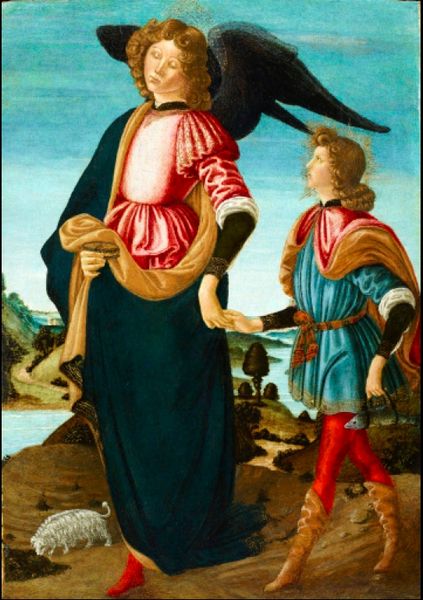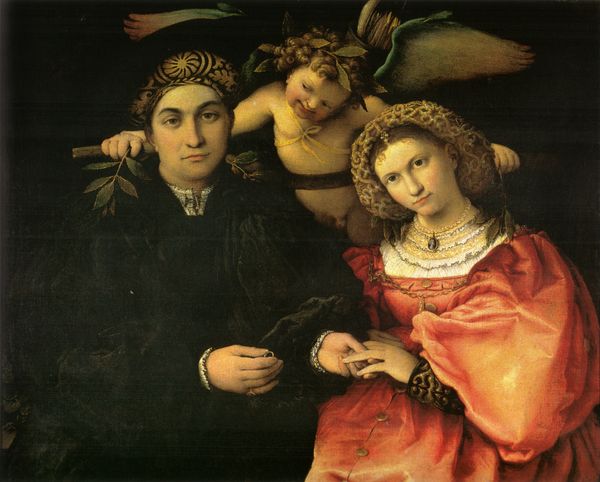
tempera, painting, fresco
#
portrait
#
tempera
#
painting
#
landscape
#
fresco
#
animal portrait
#
arch
#
christianity
#
italian-renaissance
#
portrait art
#
angel
Copyright: Public domain
Curator: Standing before us is Pietro Perugino's tempera painting, "Archangel Raphael with Tobias," created around 1500. It currently resides at the National Gallery in London. Editor: The immediate impression is one of serenity. The angel's gaze, the gentle slope of the landscape, it all seems designed to evoke a sense of profound peace. There's also something curious about the raw sienna of his wings; almost earthen. Curator: That quietude is, I think, central to Perugino's aesthetic project. He achieves it through a careful balance of form, the symmetry in the figures mirrored by that delicate rendering of light across the scene, resulting in visual harmony. Note how Tobias, while smaller in scale, serves to complement the angel through tonal echo of color and hue. Editor: Let's not overlook the fish hanging from Tobias's hand. This work seems far removed from the immediate demands of, say, farming or fishing, and yet it uses these tangible references, to suggest labor—that the journey wasn't just miraculous, but also grounded in everyday practicalities and manual handling. Curator: Certainly, there's a narrative thread tied to tangible concerns. The fish refers to the Book of Tobit where the gall of a fish heals Tobias's father's blindness. Yet, visually, the smoothness of line, the way forms like that fish are almost abstracted, transforms the practical into a visual and symbolic tool. Editor: What's fascinating to me is speculating about the artist's methods and that relationship between artist, patron and audience during its making. This panel would have had an immense significance not simply for its inherent composition or symbolic value, but as an aspirational piece and object for the devout in Renaissance Italy. Curator: I concede the materiality is inherently linked with its reception. Even its survival reflects societal shifts. However, considering solely its cultural function risks ignoring its enduring quality, that careful balance of forms that continues to invite contemplation and analysis even now, more than five centuries after its making. Editor: Perhaps, though, its "enduring quality" stems partly from those embedded material histories, that constant silent presence of maker and purpose whispering from the work itself. Curator: A worthy provocation indeed! Editor: Likewise.
Comments
No comments
Be the first to comment and join the conversation on the ultimate creative platform.
